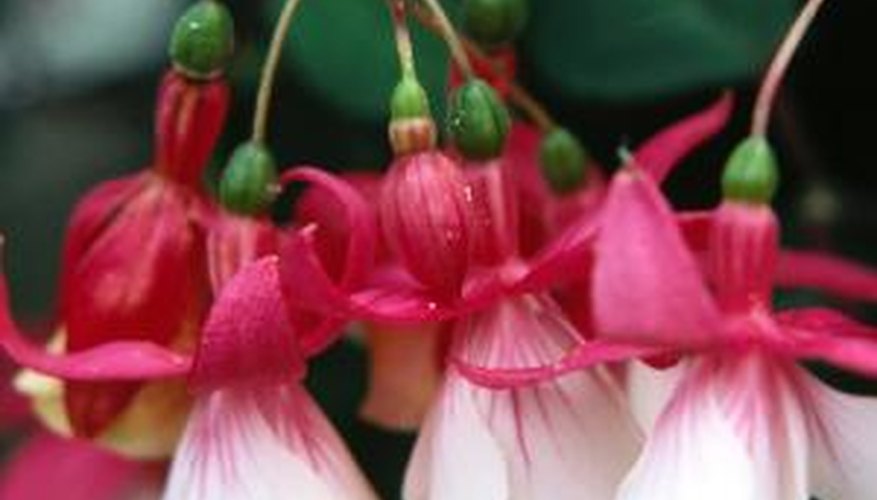Fuchsia plants may grow as vines, trail from hanging baskets or emerge as shrubs in the soil. Hardy fuchsias can survive over a freezing winter to return each spring. Although many gardeners enjoy fuchsias for their distinctive trumpet-shaped blossoms, you might prefer instead to kill a fuchsia to, for instance, clear a planting area. Within a short time, the fuchsia will die back and you can replace it with a different plant.
- Fuchsia plants may grow as vines, trail from hanging baskets or emerge as shrubs in the soil.
- Within a short time, the fuchsia will die back and you can replace it with a different plant.
Use pruning shears to cut back the bush while it is actively growing to just above the soil level. Collect all the stems and foliage you remove in a bucket or basket.
Spray the stems that remain from the plant carefully with glyphosate spray. Coat the severed stems generously.
Check the results of the herbicide application after one or two weeks. The remains of the fuchsia bush should be dead with no new growth coming from the severed stems. If you see new growth, reapply the glyphosate a second time using the same technique.
Dig out the root system of the dead fuchsia bush to clear the area if you wish to replant. If you do not wish to replant, removing the root system is not necessary.
TIP
Apply glyphosate on a sunny day when temperatures range between 15.5 to 26.6 degrees C (60 and 80 degrees Fahrenheit). Avoid windy days for applying glyphosate, because the wind could spread the herbicide to desired plants.
WARNING
Use care as you apply the glyphosate spray. This nonselective herbicide will kill almost any plants it contacts. If you fear overspray on desired plants, apply the glyphosate with a paintbrush instead. Brush the glyphosate liquid generously over the cut ends of the stems. Keep people and pets away from the application area until the herbicide dries.
